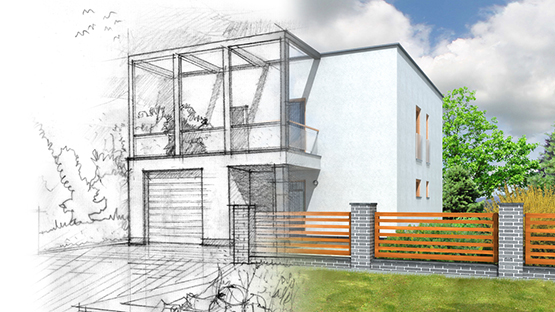Exactly How CDA Architects Integrate Creativity and Capability in Modern Design
Exactly How CDA Architects Integrate Creativity and Capability in Modern Design
Blog Article
Comprehending the Collaborative Process Between Engineers and Designers in Modern Building Projects
The collaborative procedure in between engineers and engineers is important in contemporary building projects, as it balances style intent with engineering feasibility. Checking out these characteristics discloses insights that can considerably influence job outcomes and total market criteria.
The Value of Partnership
The joint harmony in between designers and designers is essential for the successful awareness of any kind of construction project. This collaboration combines distinct know-how and perspectives, allowing the assimilation of cutting-edge layout with useful design services. By working with each other, designers and designers can ensure that a task not only satisfies aesthetic and functional requirements yet also complies with safety, sustainability, and budgetary constraints.
Collaboration fosters a shared vision, assisting in the alignment of objectives and expectations from the beginning. This placement is essential in resolving potential obstacles and mitigating risks that could arise during the job lifecycle. Additionally, a collaborative method permits the effective allotment of resources, maximizing both time and price.
The value of collaboration encompasses the iterative process of style and construction, where responses from engineers can inform building decisions, bring about even more feasible and lasting designs. Alternatively, designers can influence designers to think creatively regarding just how to achieve architectural stability without compromising creative intent. Ultimately, the joint relationship in between designers and designers is not just valuable; it is fundamental to the creation of premium, functional, and cutting-edge built environments that fulfill the requirements of society.
Interaction Strategies and Devices
Efficient interaction methods and devices are essential for fostering cooperation in between designers and designers throughout the task lifecycle. Establishing clear networks of interaction is important to ensure that all team participants are aligned with task goals, timelines, and obligations. Regular meetings, both in-person and online, offer opportunities for stakeholders to discuss progression, address concerns, and make educated decisions.

Additionally, embracing collective communication tools, such as Slack or Microsoft Teams, enables instant messaging, documents sharing, and ongoing conversations, advertising an extra agile feedback to emerging problems. Record monitoring systems also play an important role in organizing job documents, making sure that all group participants have access to the most up to date details.
Shared Goals and Task Vision
An unified task vision works as the foundation for effective collaboration between architects and engineers (cda architects). This shared vision not only aligns the efforts of both celebrations however additionally develops a common framework for decision-making throughout the job's lifecycle. By expressing clear goals, stakeholders can effectively navigate the complexities of modern building jobs, ensuring that both visual Full Report and functional demands are satisfied
Developing common goals involves open discussion and a complete understanding of each technique's contributions. Architects typically concentrate on layout intent, spatial connections, and customer experience, while designers stress architectural integrity, systems functionality, and compliance with policies. When these perspectives are aligned, the outcome is a cohesive job that sticks to both imaginative ambitions and technological usefulness.
Moreover, a distinct project vision promotes responsibility amongst group members, urging each participant to take possession of their role in achieving the desired end result. Routine check-ins and collaborative workshops can further reinforce this dedication, enabling changes to be made as the job advances. Ultimately, a shared vision not only improves teamwork however additionally raises the high quality of the final deliverable, resulting in effective task completion.
The Duty of Modern Technology
Leveraging innovation has actually ended up being vital in boosting partnership in between architects and designers. The assimilation of innovative software program devices facilitates real-time communication and info sharing, enabling teams to work extra efficiently and successfully. Structure Info Modeling Resources (BIM) stands apart as a critical modern technology, allowing both designers and designers to produce comprehensive 3D versions that envelop style intent and structural honesty. This shared visual depiction lessens misconceptions and improves the decision-making process.
Additionally, cloud-based platforms allow seamless collaboration, allowing project stakeholders to accessibility and upgrade job information from anywhere. This cultivates a society of transparency and accountability, as changes can be tracked and examined in real-time. In addition, mobile applications further improve communication, providing on-site groups with instant access to task requirements and updates.
Arising modern technologies such as expert system and artificial intelligence are also starting to contribute in predictive analysis, helping teams recognize prospective concerns before they emerge. Inevitably, the function of innovation in architecture-engineering collaboration not only improves operations effectiveness but also enhances innovation, leading to more effective task outcomes. By accepting these technological improvements, engineers and designers can ensure an extra natural and effective collaborative procedure throughout the building lifecycle.
Situation Studies in Successful Partnerships
Many instance research studies show the profound effect of reliable partnerships between engineers and designers on task end results. One significant example is the collaboration on the High Line in New York City City, where landscape engineers, engineers, and city organizers interacted to transform an abandoned railway into a vivid public park. This multidisciplinary method not just boosted the visual quality yet likewise made certain architectural safety and security and ecological sustainability.

The Burj Khalifa in Dubai further demonstrates the relevance of collaborative initiatives - cda architects. The combination of design and engineering knowledge allowed the task team to attain unprecedented heights while sticking to safety and security guidelines and visual vision
These examples underscore the significance of communication, trust fund, and shared purposes. In today's complicated building environment, such partnerships are necessary to navigating challenges and supplying projects that fulfill both practical and visionary objectives.
Verdict
In conclusion, useful reference the collaboration between engineers and engineers is crucial for the success of contemporary building and construction projects. Effective communication strategies, a shared project vision, and the integration of advanced modern technologies are vital parts that facilitate this partnership.
Report this page